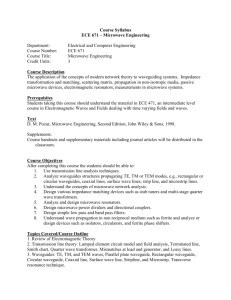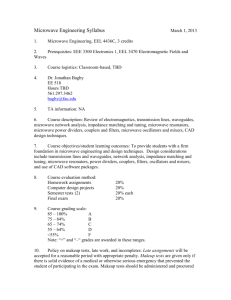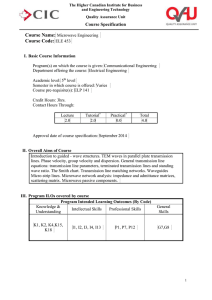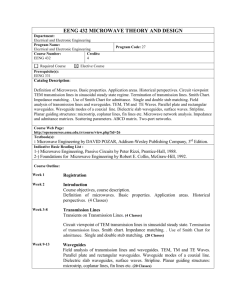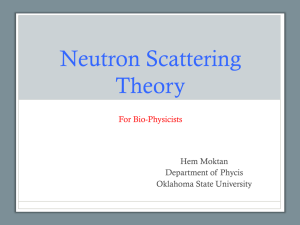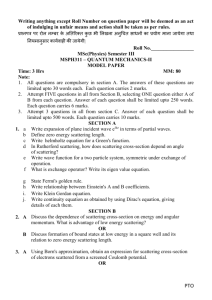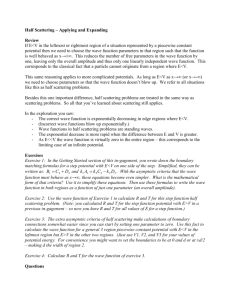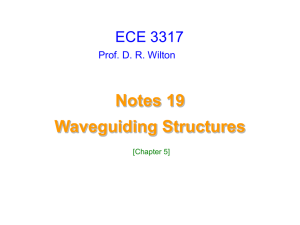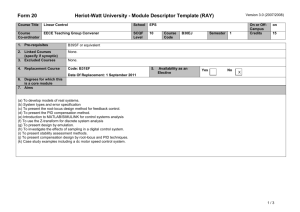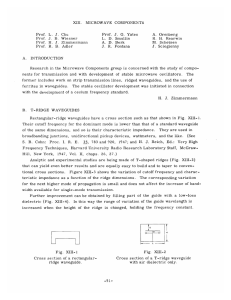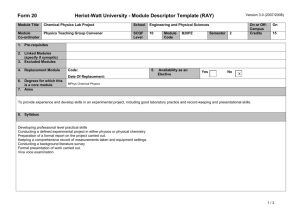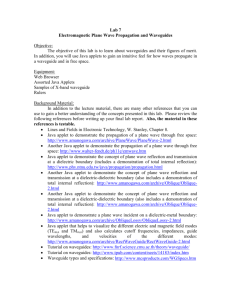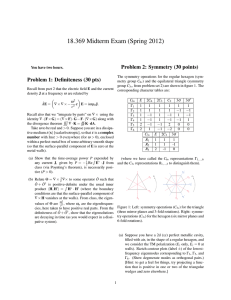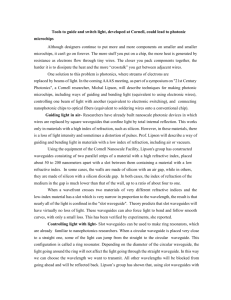B30MT - Microwave techniques - Heriot
advertisement
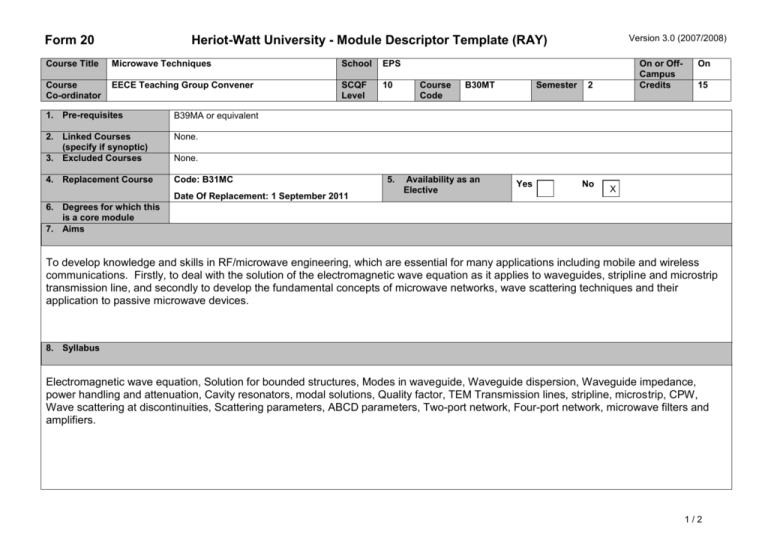
Form 20 Version 3.0 (2007/2008) Heriot-Watt University - Module Descriptor Template (RAY) Course Title Microwave Techniques School EPS Course Co-ordinator EECE Teaching Group Convener SCQF Level 10 1. Pre-requisites B39MA or equivalent 2. Linked Courses (specify if synoptic) 3. Excluded Courses None. 4. Replacement Course Code: B31MC Course Code B30MT Semester On or OffCampus Credits 2 On 15 None. Date Of Replacement: 1 September 2011 5. Availability as an Elective Yes No X 6. Degrees for which this is a core module 7. Aims To develop knowledge and skills in RF/microwave engineering, which are essential for many applications including mobile and wireless communications. Firstly, to deal with the solution of the electromagnetic wave equation as it applies to waveguides, stripline and microstrip transmission line, and secondly to develop the fundamental concepts of microwave networks, wave scattering techniques and their application to passive microwave devices. 8. Syllabus Electromagnetic wave equation, Solution for bounded structures, Modes in waveguide, Waveguide dispersion, Waveguide impedance, power handling and attenuation, Cavity resonators, modal solutions, Quality factor, TEM Transmission lines, stripline, microstrip, CPW, Wave scattering at discontinuities, Scattering parameters, ABCD parameters, Two-port network, Four-port network, microwave filters and amplifiers. 1/2 Form 20 Version 3.0 (2007/2008) Heriot-Watt University - Module Descriptor Template (RAY) Course Title Microwave Techniques School EPS Course Co-ordinator EECE Teaching Group Convener SCQF Level 10 Course Code B30MT Semester 2 On or OffCampus Credits On 15 9. Learning Outcomes (HWU Core Skills: Employability and Professional Career Readiness) Subject Mastery Understanding, Knowledge and Cognitive Skills Scholarship, Enquiry and Research (Research-Informed Learning) To have a detailed understanding of the solution of electromagnetic boundary problems such as waveguides and cavity resonators To be able to critically analyse modal behaviour of waveguides, waveguide dispersion, waveguide impedance. A detailed knowledge of wave scattering in discontinuous structures, scattering parameters, simple scattering networks Understanding of engineering principles and the ability to apply them to analyse key engineering processes. Personal Abilities Industrial, Commercial & Professional Practice Autonomy, Accountability & Working with Others Communication, Numeracy & ICT To be able to undertake problem solving, design of very high frequency circuits To be able to show originality in dealing with high frequency design problems Understanding of contexts in which engineering knowledge can be applied (e.g. operations and management, technology development, etc). 10. Assessment Methods Method 11. Re-assessment Methods Duration of Exam Weighting (%) Synoptic modules? Method (if applicable) Examination Coursework 2 hours Duration of Exam (if applicable) 80 20 NA 12. Date and Version Date of Proposal 23 February 2011 Date of Approval by School Committee Date of Implementation Version Number 1.0 2/2

